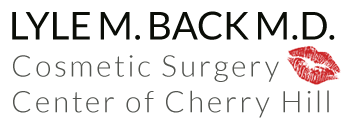Understanding Melanin And Hyperpigmentation
Melanin is a natural pigment compound produced by very special cells in the skin called “melanocytes”. The melanocytes “inject” packages of melanin (melanosomes) into the surrounding skin cells and tissues by special connecting tentacle-like bridges called “dendrites”. Melanin gives our skin and hair its color. Higher melanin content translates into darker skin or hair color. The body’s control of the melanocytes – where they tend to congregate, how active they are in pigment production, the number of dendrite connections, where and how much pigment is deposited – is a highly sophisticated and complex system. It involves special chemical signals to and from the brain, nerve receptors, hormones, special hormone receptors, and even the immune system. Melanin pigment is more than just a cosmetic issue as it serves a variety of important functions including the visual process and UV radiation protection.
Albinism is a genetic condition in which the melanocytes are variably non-functional and melanin production is either extremely deficient or absent. This effectively means little to no pigment anywhere, sometimes not even in the retina of the eyes. This is associated with a wide variety of problems revealing just how important having this pigment present really is. Significant vision problems and skin cancers are much more common. There is no known form of medical therapy which can treat the hypopigmentation of albinism.
Vitiligo is a genetic condition where melanocytes begin to spontaneously die and disappear from sections of the skin. Increasingly large patches of skin become depigmented, usually first beginning on the hands, arms, feet or legs. Vitiligo can occur in association with other medical problems such as Addison’s disease (adrenal gland dysfunction). Michael Jackson had vitiligo (confirmed at autopsy); reportedly this is what originally led him to the use of his signature “one glove” on his right hand. Most medical therapies involve trying to get the melanocytes reactivated.
Sometimes, there is focal increased melanin production and deposition creating a condition called “hyperpigmentation”. People of color are generally at greater risk for developing hyperpigmentation because they have a greater number of melanocytes. Hyperpigmentation can be associated with certain diseases and medical conditions. A special type of hyperpigmentation of the face (“melasma”) is caused by hormonal fluctuations. Most commonly, however, is hyperpigmentation which occurs on an area of the body as a response to where the skin has been injured or traumatized by scrape, cut, crush, or burn. This is because when the skin is injured in almost any way, one of its “automatic” defense responses is to gear up an increase in melanin production. As a result, days or weeks later, we might detect a darkening to the skin in and around the recovering area or maturing scars. Surgery of any kind, even cosmetic surgery, also stimulates this process. This could potentially render a scar which would have otherwise been undetectable as a dark, obvious line or shadow. Ultraviolet radiation (UV rays) which account for our “tanning” response to sun exposure is actually this same process playing out. The increased melanin production occurs as a response to the injuring effects of the UV rays on the skin.
Nothing seems to stimulate an increase in the melanin production process and melanocyte activity as much as does UV radiation. That is why the combination of traumatized skin (injury or surgery) which is then soon exposed, unprotected, to the tanning rays of the sun (or a tanning salon) creates such great risk for causing hyperpigmentation. Hyperpigmentation of this nature, sometimes called “post-inflammatory hyperpigmentation”, is often essentially permanent and poorly responsive to all attempts to eliminate it, even with repeated treatments. Since scars and traumatized skin can take many months to completely mature – sometimes 12 months or more – the risk for sun induced permanent hyperpigmentation exists concurrently for the same length of time! Using sunblockers judiciously and avoiding tanning until this period has passed is therefore wise. These concepts are actually used in reverse for the treatment of vitiligo – UV rays (and agents which increase susceptibility to the ray’s effects) are used in an attempt to reinvigorate melanin production by the melanocytes.
There are many options and strategies for treating hyperpigmentation. The most successful treatment plans must take into account a full medical history, physical examination and a developed, working diagnosis. Consult with your physician expert in cosmetic skin care.
Dr. Lyle Back is originally from New York City, receiving his medical and surgical training at Rutgers Medical School, Cooper Hospital – University Medical Center, and Ohio State. He is Board Certified in General Surgery (ABS) and Plastic Surgery (ABPS). He is a Fellow of the American College of Surgeons, the American Academy of Cosmetic Surgery, and a longstanding member of the premier American Society of Plastic Surgeons. He specializes in the full range of the most modern and state of the art cosmetic skin care procedures and non-surgical cosmetic enhancement techniques available today.
